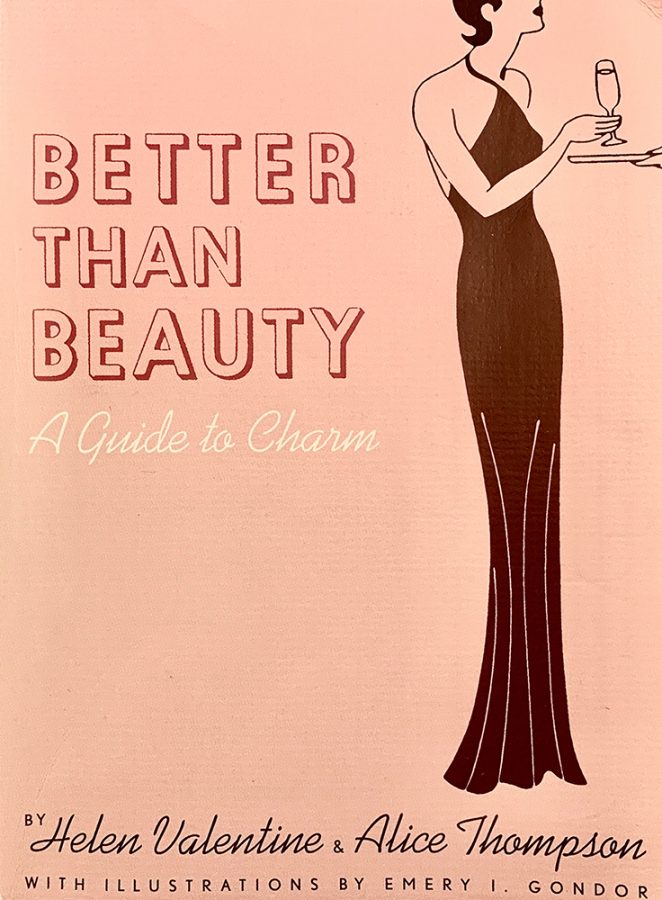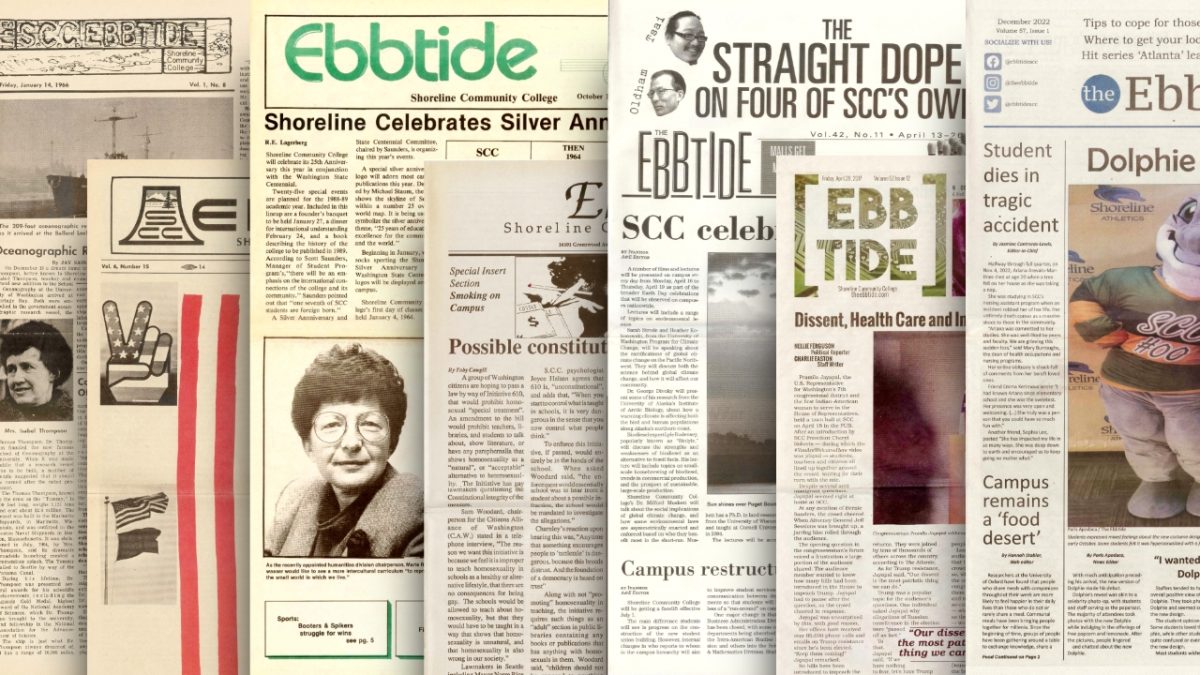1930s Handbook Transcends Time
“Apply an all-over foundation cream (any reputable brand) in a shade that matches your skin tone.”
“If your brows are blonde or not well-defined, use an eyebrow pencil lightly.”
These tips might sound as if they’ve been plucked straight from a makeup blog, but believe it or not, they’re 81 years old.
Originally published in 1938 and penned by authors Helen Valentine and Alice Thompson, “Better Than Beauty: A Guide to Charm” proves surprisingly timely for the modern reader.
I first discovered the title on a Facebook group called “Mid-Century Advertising” — a group dedicated to sharing magazine art from the 1930s-1970s.
One post showcased a photograph of back-page ads from an issue of Seventeen that donned an advertisement for the book, which at the time sold for $1.
With my ever-present fascination in authentic fashion and self-care tips from decades gone by, my interest was instantly piqued. After brief research, I found that it had been reissued in the early 2000s, and promptly ordered a used copy for $3.21 from @@@secondsale.com@@@.
Each page of “Better Than Beauty” is chock-full of logical, easy-to-understand tidbits of advice. Sitting at an easily-digestible 164 pages, it makes for a perfect read whether you’re on-the-go or relaxing at home.
From the Beginning
Although its angle is charm, “Better Than Beauty” deals more with everyday etiquette.
Right off the bat, the book jumps straight into surface-level upkeep about makeup, but only dedicates a short amount of time to such a routine before detailing how to cleanse and care for the skin. This is the first sure sign that the authors are more focused on well-being than appearances, making the pointers universally applicable for anyone.
Later, they go on to emphasize the importance of nutrition and exercise with a chart of average weights-by-height along with suggestions for balanced diets that can keep you in a healthy range.
Valentine and Thompson are extra considerate in their attempts to dispel popular rumors about what female readers “should” be doing to become healthy (such as page 27’s instructions to avoid reducing tablets and similar medicines), and further along, the advice comes full-circle with visual tricks to dressing fashionably and practically.
The book features a host of communication tips, too. How many times a day do you find yourself telling a friend about something that’s happened to you? “Better Than Beauty” even holds wisdom for a situation as specific as this: Avoid distracting listeners with irrelevant details.
“Brevity always was and always will be the soul of wit,” the authors write on page 94 in regards to retelling anecdotes to friends. In other words, as they say later in the section, “Cut it short!”
A Plethora of Etiquette
“Better Than Beauty” suggests how to carry yourself around others, emphasizing the importance of first impressions with tips on shaking hands and facial expressions upon meeting new people.
Valentine and Thompson address small aspects you might never have considered, such as monitoring the volume and tone of your voice — which once caught can be quickly controlled.
They describe how you can balance conversations with your interests as well as the other person’s, and show active engagement as a good listener: “Do not ask how people are unless you want to know and intend to give them the courtesy of your undivided attention while they answer your question,” they write on page 91. This not only advises how to avoid petty conversation, but how to exhibit decency in the process.
Readers are also reminded of standard manners, such as the art of “thank you” along with showing consideration for your server when dining at restaurants and your cashier while shopping at stores.
Social Do’s and Don’ts
“Remember your introduction to your present ‘crowd?’”
On page 114, Valentine and Thompson recall the all-too-familiar feeling of joining a new friend group: “The timidity that overcame you just before you went to that first gathering? That awful sense of everyone knowing everyone else, except you?”
It is one of the many instances throughout the book where the authors reach through time to touch on feelings that have transcended the decades.
As a way to exhibit charm, the book advises you to recognize people at parties who appear out of their element and try to make them feel at ease.
The section is rounded out with advice not to “collect” (or gather contact information for) every person you find slightly interesting at parties, as this will bury important friends and clutter your social life; a point extremely relevant in the age of social media when even the most casual of new acquaintances can be added to your ‘friends list’ with the click of a button.
The book also provides tips on limiting drinking in social situations. “Never feel that you are a goody-good if you don’t drink at all,” the authors write on page 143, before expressly forbidding the reader to ride in a car with an intoxicated driver.
Global Relevance
Considering the time period, Valentine and Thompson employ a surprisingly worldly view in an effort to put readers’ problems into perspective.
“One look at mass problems of unemployment, hunger, drought, and persecution will give you a gauge by which to measure your own tribulations,” they write on page 92.
They also offer a “recipe” for a successful conversation on page 96: “Assemble good ingredients, mix and spice with your own thinking, and serve attractively.” The book holds a surprisingly progressive outlook, urging readers to expand their minds by reading a variety of news and other publications with views different to their initial mindset to provoke fresh thought.
Perhaps more strikingly timely is a passage that follows on pages 98-99: “Try to read the news with an eye for possible propaganda,” the authors advise. “Try to see what’s behind the articles you read.”
Not only is the tip exceedingly relevant today, but especially poignant considering it was published when the world was on the brink of World War II — which broke out just one year after the book’s release. On page 100, they urge political awareness with a slice of sound advice: “Know what’s happening. And know where you stand.”
A Timely Read for All
Valentine and Thompson’s genuine interest in the well-being of their customers struck me as surprising considering the “prim and proper” perceptions that present-day readers may hold of the 1930s. But it is often forgotten that there were people (likely even college students) who purchased the book with the same, timeless intention of improving themselves.
What’s more is the book’s whimsical original illustrations, which are placed methodically throughout the pages to support whichever passage is currently being discussed.
Throughout the book, the only vague reminders of its time and place come with its occasional thrifty, Great Depression-era tricks like utilizing lemon juice and vinegar to rinse your hair.
But regardless of its publication date, “Better Than Beauty: A Guide to Charm” is by no means obsolete. Bursting at the seams with relatable, timeless wisdom, it deserves a place on any modern bookshelf.














